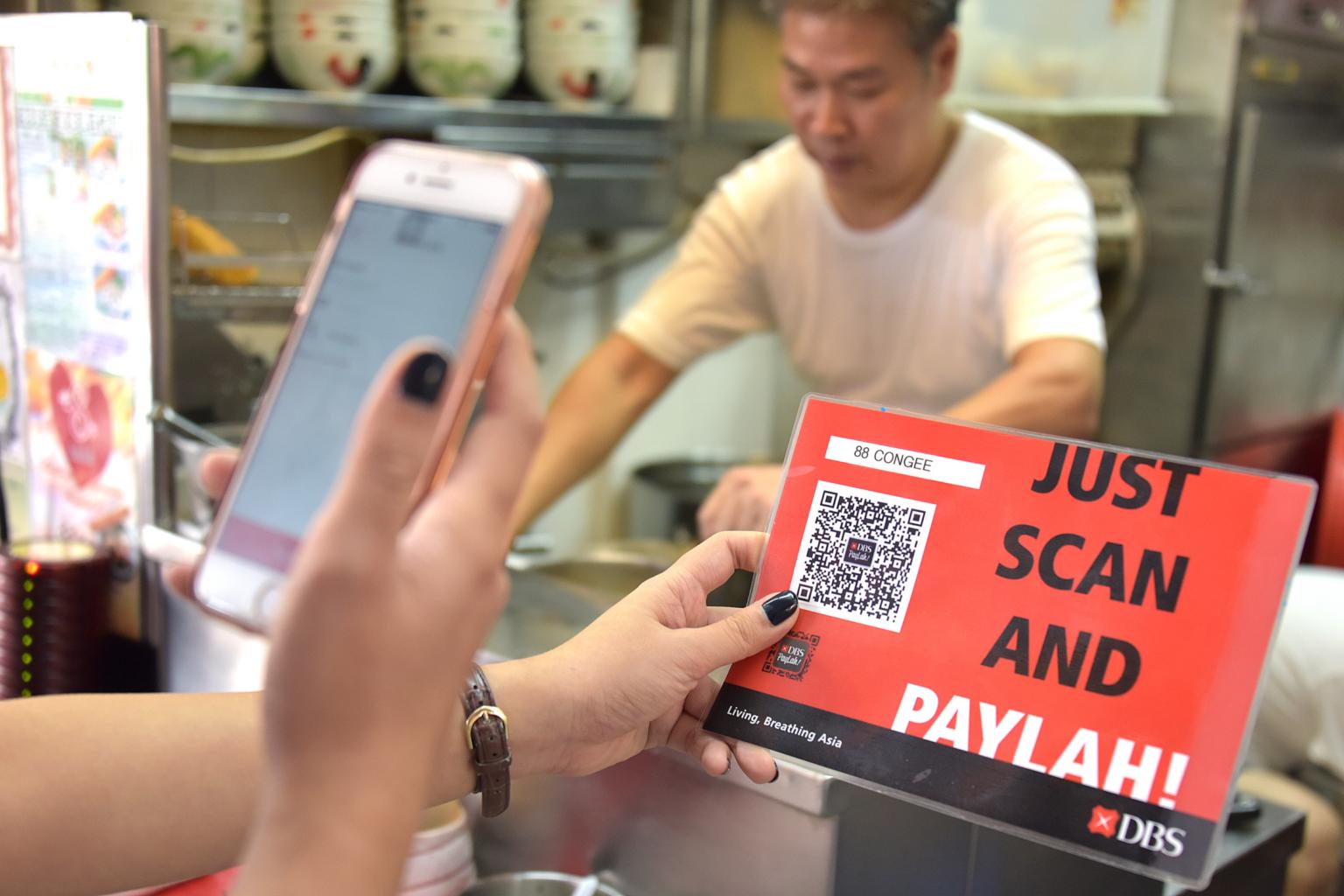QR code payment popular in Singapore and a boon for small merchants, says NUS study
Sign up now: Get ST's newsletters delivered to your inbox

A patron paying for her food using the DBS PayLah mobile payment app at a hawker centre in Toa Payoh, on Sept 6, 2017.
PHOTO: THE NEW PAPER
Follow topic:
SINGAPORE - Paying for purchases via a QR code has quickly gained traction among consumers in Singapore, and this has largely benefited small merchants, a new study showed.
The study by the National University of Singapore found that the value and number of PayLah transactions jumped after DBS Bank added this mode of cashless transaction in April last year.
The monthly transacted amount rose from about $600,000 in April to more than $1.6 million in December.
Similarly, the number of transactions tripled from about 6,000 to around 18,000.
When QR code payment technology was introduced, "the monthly transaction amount and count start to trend up almost immediately", said researchers involved in the study.
"In contrast, the (automated teller machine) withdrawals stay flat all over the year, which suggests the rise of mobile wallet transactions is not simply driven by a reduction in cash usage," they added.
First introduced in 2014, DBS PayLah is a personal mobile wallet which allows people to perform fund transfers via a mobile number.
The e-wallet, which garnered more than 100,000 users less than two months after its launch, currently has more than one million users.
It is often used to pay for transactions below $100, the study said.
The number of transactions for purchases below $100 shot up to some 14,000 in December last year, from about 4,000 in April.
The number of transactions for purchases of $100 and more doubled to about 4,000 from around 2,000 in the same period.
Small merchants, including those at hawker centres, foodcourts and convenience stores, "experienced a significant increase in monthly card sales amount by 7 per cent" for purchases below $100 from customers using PayLah.
"New entrepreneurs who just started their business benefit more from the low-cost, convenient new technology," the researchers said.
The findings were based on an anonymised data set containing a variety of bank activities for 250,000 consumers from a leading local bank, for the period January 2016 to December 2017. The consumers transacted with 45,469 unique merchants during those two years.

